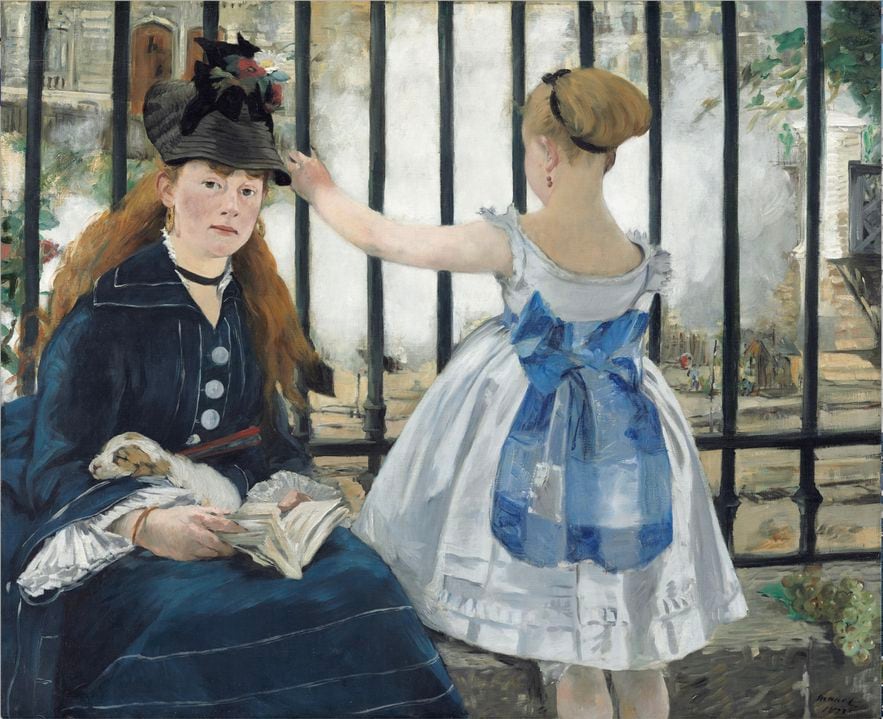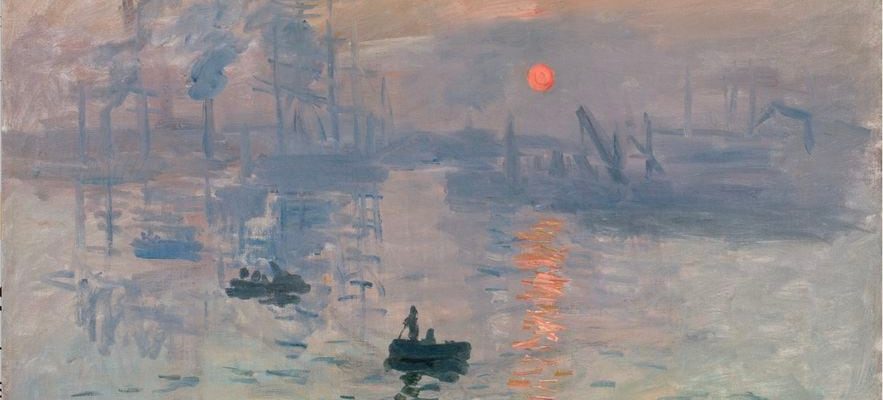It was a Wednesday, one hundred and fifty years ago, almost to the day. On April 15, 1874, in Paris, what would later be called the “first impressionist exhibition” opened at 6 p.m. at 35, boulevard des Capucines, in the former workshops of the photographer Nadar: a few floors served, attic of the luxury, by an elevator. United under the banner of an anonymous cooperative society, 31 “hungry for independence” breaking with the system – which, most often, rejects them – show their works there. The following Saturday Louis Leroy’s report appeared in the columns of Charivari. Making fun of these new “contemporary” trends, the journalist jokes about the title of painting no. 98, Print, rising sun by M. Monet, a port composition with blurred contours which sees the orange reflections caressing in small touches the misty blue of the waves. At random from the terminological variations dared by Leroy to amuse the gallery, the term “impressionism” arises and, at odds with the satirical intentions of the chronicler, will remain in posterity as a major stage in the history of art. Four days later, The century published the first article using the name positively, from the pen of Jules-Antoine Castagnary: “They are impressionists in the sense that they render not the landscape, but the sensation produced by the landscape.” All is said.
What can we remember today from April 15, 1874, still considered today as the kickoff of the avant-gardes? Based on new research, the Musée d’Orsay explores, under the curatorship of Sylvie Patry and Anne Robbins, behind the scenes and the issues behind this birth of a trend that has become legendary through two new proposals, visible until the 14 July. The first, developed in collaboration with the National Gallery of Art in Washington, is a retrospective bringing together a stunning selection of works that appeared in the famous exhibition of 1874 and puts them in perspective with paintings or sculptures shown at the Salon de la same year. The second offers an immersive journey in augmented reality, designed by the Parisian museum and co-produced by Excurio and Gedeon Experiences, which invites the visitor to the inauguration of 35, boulevard des Capucines, recreated as faithfully as possible: no image of the event Having reached us, we had to rely on the welcome booklet published by the exhibitors, the letters they exchanged and the press articles of the time.
Claude Monet, “Impression, Rising Sun”, 1872.
/ © Marmottan Monet Museum / Studio Christian Baraja SLB
In the spring of 1874, French society was immersed in a post-war climate. The Franco-German conflict won by Prussia, then the bloody riots of the Commune happened there. The capital has been severely damaged, it is time for reconstruction. Around the Garnier Opera, about to be inaugurated, and the Printemps, which has just been inaugurated, the district is being remodeled to become a temple of commerce and entertainment, with its wide avenues and grand boulevards. A few years earlier, a band of recalcitrants laid the beginnings of the rebellion: “refused” at the Salon of 1867, the future stars Cézanne, Degas, Monet and other Pissarro fomented the revolt in a bar in Batignolles under the leadership of Manet, whose workshop is just a stone’s throw away. Their leitmotif: trampling on the history painting and biblical allegories that are the delight of the Academy in favor of “modern subjects”. Degas painted his Ironer and the little dancers of the Opera at work, Berthe Morisot captures scenes of domestic life, Monet, Pissarro and Sisley capture live the changing effects of the atmosphere, while Bazille, soon cut down by the war which announces, paints a portrait of his colleague Renoir immersed in his thoughts.
Of the thirty artists present on April 15, 1874, only seven enjoy universal fame today. Alongside Monet, whosePrint, rising sun inspires the name of the movement – even though, ironically, he decided on the title in haste four days earlier – Renoir, Sisley, Pissarro and Morisot, the only woman in the group, constitute the flagship of the current. Cézanne, flanked by Degas, here in the role of chief organizer, share with their companions the eagerness to work on new pictorial forms but remain unclassifiable. Eugène Boudin, Monet’s early influencer, and etcher Félix Bracquemond are also at the party. In ambush, the merchant Paul Durand-Ruel, support from the start, keeps watch. At the entrance, past the “counter turnstile”, the visitor discovers the spaces “hung with red-brown wool”, where some 200 works, “admirably lit”, are displayed in a cozy atmosphere, in total contrast with the overcrowded picture rails of the Living room.

Edouard Manet, “The Railway”, 1873.
/ © Photo Courtesy of National Gallery of Art, Washington
The 31, among whom a minority are linked to what will become impressionism, form a most heterogeneous team. At Nadar, the canvases executed quickly in front of the motif sit alongside more conventional paintings, prints, sculptures or enamels. To drive the point home, the participants inaugurated their exhibition ahead of the Salon which opens at the beginning of May at the Palais de l’Industrie, a short distance away, and where all of Paris is ecstatic over the monumental formats of mythological inspiration, religious or historical signed Jean-Léon Gérôme, here with a Power behind the throne with a polished finish, or Alphonse de Neuville, champion of military representation. Heavyweights who completely eclipse Manet and his radical Railway, a masterpiece of a modernity still in its infancy. Summoned to join the coalition of Boulevard des Capucines, the latter preferred to infiltrate the enemy camp, the only path, in his eyes, that could lead to success.
Despite the unconditional support of Durand-Ruel and a handful of critics, led by Zola, the first impressionist exhibition turned into a commercial failure. For a month, 3,500 curious people paid 1 franc entry fee and only four works found a buyer, including the one that started it all: the emblematic Print, rising sun by Monet, still sold for 800 francs. But nothing to brag about… Largely in deficit, the anonymous cooperative company is closing its doors, still unaware that it has laid the foundations for a pictorial revolution in progress. By enjoying the fruits of the protest, the impressionists lost their feathers but gained a label.
.
